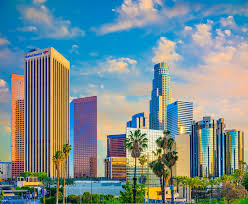In January 2025, Los Angeles faced one of its most challenging periods as a series of wildfires, exacerbated by severe Santa Ana winds and prolonged drought conditions, ravaged the region. The Palisades Fire in Pacific Palisades and the Eaton Fire in Altadena were particularly destructive, leading to significant loss of life, property, and cultural landmarks.
The Fires’ Toll
The wildfires, which ignited on January 7, 2025, resulted in at least 29 fatalities and forced over 200,000 residents to evacuate. More than 18,000 homes and structures were either destroyed or damaged. The Palisades Fire alone consumed approximately 23,448 acres, making it one of the most destructive in the city’s history. The Eaton Fire similarly wreaked havoc in Altadena, decimating entire neighborhoods.
Cultural and Historical Losses
The fires did not spare cultural and historical sites. The Palisades Branch Library was lost to the flames, and the archive of renowned composer Arnold Schoenberg was destroyed. Additionally, Corpus Christi Catholic Church suffered complete destruction, and several schools in the area sustained major damage, leading to prolonged closures.
Economic Impact
The financial repercussions are staggering. JPMorgan estimated insured losses to exceed $20 billion, potentially making this the costliest wildfire event in U.S. history. The total economic impact, including uninsured losses and broader economic disruptions, could reach $50 billion. The destruction of thousands of homes has further strained Los Angeles’s already tight housing market, with reports of rent increases exacerbating the challenges for displaced residents.
Community Resilience and Rebuilding Efforts
In the face of such adversity, the Los Angeles community has demonstrated remarkable resilience. Benefit concerts, such as the FireAid event held on January 30, 2025, raised over $100 million for wildfire recovery efforts. Local organizations and residents have mobilized to support those affected, providing shelter, food, and essential services.
Mayor Karen Bass issued an executive order to expedite the rebuilding of homes and businesses, emphasizing the city’s commitment to restoring affected communities. However, the path to recovery is fraught with challenges, including concerns over potential mudslides in burn scar areas as the region prepares for upcoming rainstorms.
Looking Ahead
As Los Angeles moves forward, the focus remains on rebuilding and strengthening the city’s resilience against future natural disasters. The recent wildfires have underscored the importance of comprehensive emergency preparedness, sustainable urban planning, and community solidarity. While the scars of the fires will remain for years to come, the collective efforts of residents, officials, and organizations offer hope for a restored and more resilient Los Angeles.


